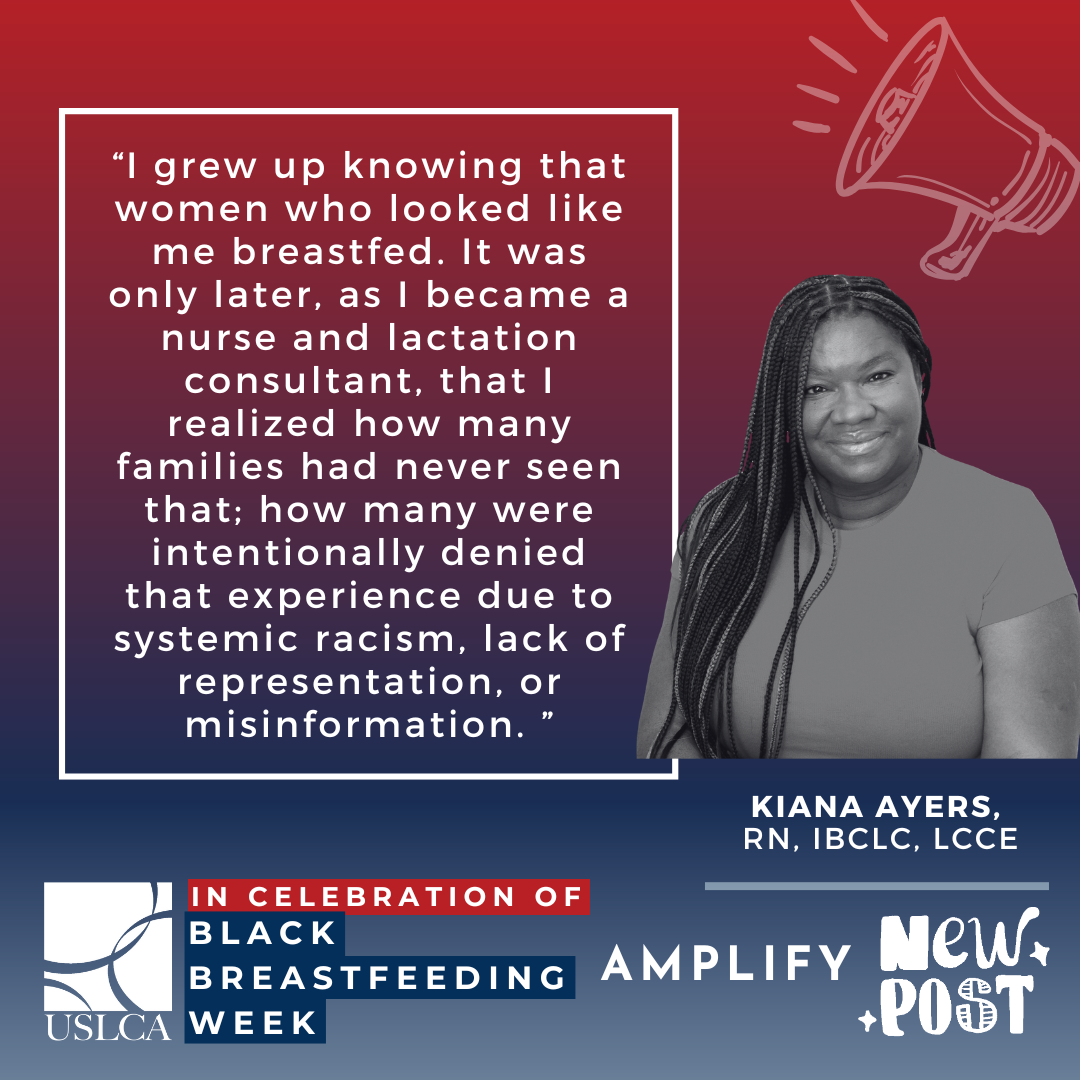By Joan Randle, MSHS, BSN, IBCLC
 Learning how to breastfeed a newborn is hard! Even under the best of circumstances adjusting to the arrival of a newborn and learning to breastfeed/chestfeed can be incredibly difficult. Even more difficult can be preterm births, defined as any birth before 37 weeks gestation, which present a different set of challenges when establishing the lactation relationship.
Learning how to breastfeed a newborn is hard! Even under the best of circumstances adjusting to the arrival of a newborn and learning to breastfeed/chestfeed can be incredibly difficult. Even more difficult can be preterm births, defined as any birth before 37 weeks gestation, which present a different set of challenges when establishing the lactation relationship.
The earlier the delivery the more critical the need for their parent’s own milk and the greater the challenge to establish a copious milk supply and/or eventually establish direct, exclusive breastfeeding/chestfeeding. Caring for the extremely preterm infant (EPI), born between 22 weeks & 28 weeks gestation, is a delicate task for healthcare providers and parents who must help the infant adapt to a very harsh environment. Human milk is essential for this infant. Infants born on the edge of viability are at exceptionally high risk for neurodevelopmental delays and psychosocial dysfunctions due to the stresses of completing gestation in the NICU and the many painful procedures necessary to save the infant’s life. Human milk is literally medicine for the EPI.
Where does lactation fit into the care of the EPI? Is provision of human milk the end game?
The healthy, full-term dyad develops a synergistic relationship; a 2-way street as it were, that enables each to learn from the other: Baby cues, parent offers the breast/chest, baby is satisfied. Parent is calmed with the surge of oxytocin triggered by the infant suckling; suckling/milk removal satisfies the baby and increases milk production. It is a lovely, positive feedback loop (in a perfect world). From this very basic act of feeding baby at the breast/chest, parent and baby learn to read each other’s cues; anticipate each other; communicate with one another. Feeding at the breast/chest is a very intimate and bonding experience that supports social and emotional development on top of providing an extraordinary diet for baby to thrive – a diet that is the very essence of personalized medicine. This parent/infant interaction, fundamental to the establishment of lactation, is missing for the extremely pre-term dyad, so much so that we may not even consider them to be a “dyad”; The newly-delivered parent of an EPI is instructed to pump and establish lactation. Producing milk is a priority. Direct feeding is not possible in the early days and weeks for this cohort, but it is a goal that we should be encouraging the parent to work toward daily. Helping parents can help them feel more connected to their fragile infant. The provision of human milk is important; however, the provision of parental care (touching, holding, talking, etc.) is also important to these infants.
The literature is compelling that excessive and/or prolonged stress caused by painful procedures is harmful to the EPI. Current research into neurodevelopmental delays and psychosocial dysfunctions of EPI survivors has focused on the effects of chronic toxic stress experienced in the NICU. Stress for these infants has been viewed through the lenses of environmental factors and pain producing procedures. The literature is consistent in concluding that neuroprotection will be attained by minimizing stress through environmental modifications and limiting painful procedures. The absence of pain in a comfortable environment does not alleviate the stress an EPI must manage or endure. The stress of being separated from their parent overwhelms the EPI’s ability to cope. They are neurobiologically unable to make sense of the world, to understand what is happening, or communicate with the people who are saving their life. The infant is isolated, in pain, afraid. Evidence-based practices limit ‘touch times’ with the smallest neonates, theorizing that avoiding unnecessary touch (most touch is associated with painful procedures) will lessen the allostatic load, reduce stress, and improve physiologic and neurodevelopmental outcomes.
Could it be that less touch is causing more stress and inhibiting neurodevelopmental growth and development?
The EPI’s brain has only developed the capacity to initiate a ‘freeze’ reaction in response to perceived danger- an involuntary response – which would be amplified if the touch they receive is construed as a threat to life. The Polyvagal Theory (PVT), developed by Stephen Porges, states there are three neural platforms of the vagus nerve in the autonomic nervous system which work synergistically, engaging and disengaging as the subconscious detects safety or danger. An EPI has only developed one of these three platforms, the Dorsal Vagal Complex (DVC), which is the most primitive part of neuroanatomy. The DVC detects danger. The other two neural platforms (Sympathetic Nervous System and the Ventral Vagal Complex) develop later during the 3rd trimester of gestation. In the healthy adult, these three branches of the vagus nerve act in concert, accelerating or decelerating survival and/or prosocial behaviors based on the perception of safety, or the lack thereof. The EPI’s polyvagal milieu is not fully operational. The unmyelinated dorsal vagus nerve (seat of DVC) is in charge – driving the response to touch and pain. The myelinated ventral vagus, which promotes resiliency and executive functioning, is not fully developed or operational in the EPI and is in the shadow of the hyper-vigilant DVC during the completion of neurodevelopment in the NICU. The primitive/subconscious brain of an EPI is wired to avoid danger. Where you may ask, would they feel the safest? Back in the womb – or being held by their parent.
The current practice of touching extremely preterm infants as little as possible – for procedures and care times – condition the infant to expect pain with touch and focus their perception on danger. Studies have focused on painful procedures in the NICU as the primary source of stress, but have not addressed the confusion, fear, or angst an extremely preterm infant must be feeling. John Bowlby coined the term ‘failure to thrive’ in the 1950’s when he saw orphans wasting due to lack of human contact and compassion. Does the same hold true for extremely preterm infants? How can parents and healthcare providers help the EP infant feel safe enough to thrive?
Which brings me back to how the newly delivered parent of an extremely pre-term infant who is told to focus on pumping and providing human milk to her baby. It’s not just the milk that is important. The parent’s presence is as critical to this infant as is the milk the parent is providing. Objectifying human milk- making it a commodity- minimizes the parent’s role in the care and development of their fragile infant.
Lactation consultants are vital to parents of extremely preterm infants. Yes, we need to teach pump assembly, use, and cleaning; how to properly handle and store the milk; how to initiate and establish a milk supply. The most important piece of our work is to help them see how critically important they are – as parents- to their babies. It’s not just the milk.
References
Porges S. W. (2022). Polyvagal Theory: A Science of Safety. Frontiers in integrative neuroscience, 16, 871227. https://doi.org/10.3389/fnint.2022.871227
Porges S. W. (2009). The polyvagal theory: new insights into adaptive reactions of the autonomic nervous system. Cleveland Clinic journal of medicine, 76 Suppl 2(Suppl 2), S86–S90. https://doi.org/10.3949/ccjm.76.s2.17
Sanders, M. R., & Hall, S. L. (2018). Trauma-informed care in the newborn intensive care unit: promoting safety, security and connectedness. Journal of perinatology : official journal of the California Perinatal Association, 38(1), 3–10. https://doi.org/10.1038/jp.2017.124
Sweet L. (2006). Breastfeeding a preterm infant and the objectification of breastmilk. Breastfeeding review : professional publication of the Nursing Mothers’ Association of Australia, 14(1), 5–13.
Bio: I started out as a LLL Leader in 1991, became an IBCLC in 1999, and a registered nurse in 2012. After graduating with my BSN I worked in the NICU at Nationwide Children’s Hospital. I have continued to help mothers and babies with breastfeeding throughout my career. I am currently working as a clinical research nurse at Nationwide Children’s Hospital, Abigail Wexner Research Institute, Center for Perinatal Research, Division of Neonatology. I have 4 adult (all fully breastfed) children and 7 grandchildren.



